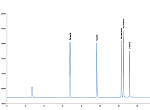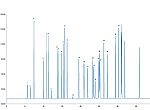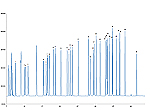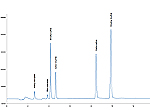BTEX monitoring
Benzene and aromatic organic compounds, such as toluene, ethylbenzene and xylenes are toxic and of carcinogenic nature. European Environmental Protection Authorities monitor benzene in ambient air continuously to observing its concentration level will not exceed the legally regulated limit value of 5 µg/m³.
Our online gas chromatographs of the GC 5000 series (FID and PID version) are QAL1 certified according to the European Directives EN 14662 3:2005, EN 15267-1:2009 and EN 15267-3:2009 by German TÜV and comply with the European Directive 2008/50/EC for air quality monitoring of BTEX compounds.
Specific configurations of our GC 5000 BTX allow for adding more organic compounds to be monitored, such as 1,3-butadiene, styrene, trimethyl benzenes and other organic species.
Monitoring of Ozone Precursors (VOC's)
Over the recent years worldwide the concentration levels of tropospheric ozone are continuously increasing and exceed the legally regulated limit values periodically. Such high concentrations of ground level ozone are harmful to the human health and affect our environment. Besides NOx especially volatile organic compounds (VOC's) contribute to the formation of tropospheric ozone. In addition emissions of aliphatic and aromatic hydrocarbons are a major source of haze and photochemical smog. Especially in developing countries but also in the industrialized world, VOC's are considered to being one of the most serious air pollutants.
The European Directive 2008/50/EC recommends monitoring a number of 28 different VOC's being well known for their ozone formation potential. Also the US EPA has published a PAMS target list of 56 different VOC's to be monitored, which basically covers the complete range of aliphatic and aromatic hydrocarbons from C2 to C12.
AMA Instruments offers combined systems and different configurations of our online GC's for monitoring of the complete range of ozone precursors from C2 to C12. Our proprietary Dual-Stage Enrichment Technology allows even for quantitative monitoring of the most volatile C2 components, whereas other systems only give indicative concentration data for ethane, ethylene and acetylene. Such advanced ozone precursor monitoring systems can even be set-up and calibrated for monitoring of additional components, such as chlorinated hydrocarbons and solvents in ambient air.
Monitoring of sulfur organic compounds (Odors)
Emissions of odors, such as mercaptanes and other sulfur organic compounds, are quite often a major reason for complaints about air pollution. Odors might be emitted from many sources, such as refineries and petrochemical plants, pulp and paper factories, fertilizer production, landfills or sewage treatment plants. Even very low concentrations already produce bad smelling odors detectable by the human nose. Monitoring of odors at such low concentration levels is extremely difficult, as sulfur organic components may react with stainless steel surfaces and decompose easily during sampling and sample pre-concentration.
Special configurations of the GC 5000 series of online gas chromatographs allow for reliable and accurate monitoring of odors in ambient air. After pre-concentration on a modified single-stage enrichment module and chromatographic separation, the sulfur organic compounds will be detected using our PID. Unlike most sulfur specific detectors, such as FPD's or electrochemical detectors, the PID is a field proven type of detector and does not require re-adjustment or maintenance at short intervals.
Monitoring of Chlorinated Hydrocarbons,
Freons and organic Solvents
Emissions of chlorinated hydrocarbons, freons and organic solvents originate from various industries, such as chemical and petrochemical plants, paint and coatings industry, plastics factories or other industrial plants. These organic compounds are toxic, cause cancer, affect our environment and may even react with other pollutants or even constituents of our atmosphere, such as stratospheric ozone.
US EPA has published various methods, such as TO14 and TO15 method, for analysis of the most harmful and commonly used halocarbons, freons and organic solvents being mainly emitted from industrial sites.
Various configurations of our GC's allow for continuous monitoring of these TO14 and TO15 components close to chemical plants and other industrial sites. These monitoring systems allow Environmental Protection Authorities to observing and controlling the emissions of such harmful organic air toxics from industrial sites or during environmental remediation projects.
Other applications
AMA Instruments has over 45 years of experience in monitoring organic compounds at low concentration levels.
We offer the most advanced GC monitoring solutions available on the market. These systems cover hundreds of different applications and organic compounds to be monitored.
Please do not hesitate to contact us for your specific application requirements.




